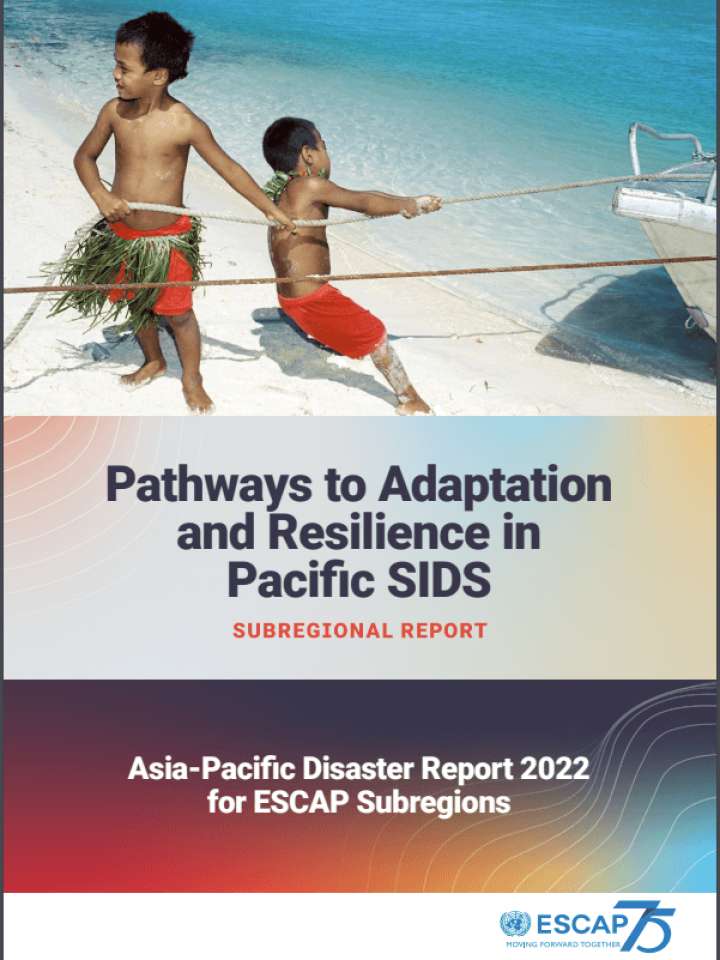Asia-Pacific disaster report 2022 for ESCAP Subregions - Pathways for adaptation and resilience in the Pacific Small Island developing states
Pathways to Adaptation and Resilience in the Pacific analyses the Asia Pacific Disaster Report 2021 and showcases how the subregion is being affected by various risk parameters, and where new hotspots of exposure and vulnerability to climate-induced, cascading multi-hazard scenarios are being created. With a focus on the Pacific SIDS, this report is one of the first to provide analytics, solutions, and key recommendations to operationalize these strategic pathways in the Climate Change and Disasters and related areas of Technology.
Some of the takeaways for Pacific SIDS presented in this report include:
- The disaster riskscape of the Pacific SIDS is being reshaped by cascading and converging hazards under a new disaster-climate-health nexus and increasing vulnerability of populations to cascading hazards.
- Pacific SIDS are likely to face a more complex set of hazards arising from the nexus of climate change and related biological hazards.
- Under the most recent Shared Socioeconomic Pathway (SSPs) climate models, the Pacific SIDS will face an increase in annual wind speed of tropical cyclones and associated health hazards.
- To decrease economic losses from natural and biological hazards, the estimated cost of adaption is only 0.15 per cent of the estimated losses, and 1.3 per cent of the subregional GDP.
- Digital solutions make possible advancements in risk analytics, social protection, early warning systems for biological hazards, and impact-based forecasting.
Explore further
